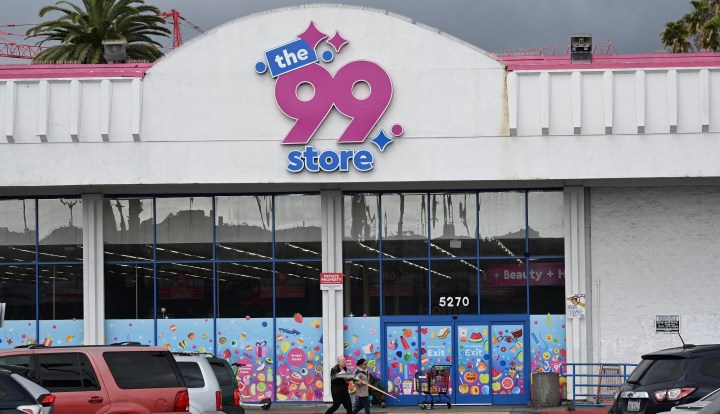
Why are discounters like 99 Cents Only Stores in dire straits?
Share Now on:
Why are discounters like 99 Cents Only Stores in dire straits?

The 99 Cents Only Store — a refuge of affordability where you could buy decorations for a dinner party, the dinnerware and the food all in one trip — has announced that it plans to shutter its 371 locations after operating for more than four decades.
Despite the gamut of options the business offered, the chain couldn’t survive in the current economy and has decided to wind down its operations. 99 Cents Stores are located in Western states, including California, Arizona, Nevada and Texas.
“This was an extremely difficult decision and is not the outcome we expected or hoped to achieve,” interim CEO Mike Simoncic said in a press release. “Unfortunately, the last several years have presented significant and lasting challenges in the retail environment, including the unprecedented impact of the COVID-19 pandemic.”
Simoncic said changes in consumer demand, shrinkage (or inventory losses, including theft) and inflation contributed to the company’s struggles.
The 99 Cents Only Store used to charge 99 cents for most items, but eventually raised prices. The chain retained a gimmick to honor its name, however, ensuring that all its prices end in “99 cents.” For example, it will advertise an item at $1.2999, although the store will effectively round that up to $1.30.
99 Cents Only isn’t the only discount retailer facing challenging fortunes. Last month, Dollar Tree said it will close 30 stores along with nearly 1,000 of its Family Dollar locations.
It’s all about location, location, location
David Gulley, an economics professor at Bentley University in Massachusetts, pointed out another obstacle 99 Cents Only has faced: inadequate economies of scale relative to its competitors.
Dollar Tree and Dollar General have thousands of locations throughout the U.S. compared to the few hundred operated by 99 Cents.
“They can negotiate better deals with their suppliers,” Gulley said. “Whereas 99 Cents more or less lives and dies with what’s happening in California and just simply does not have the scale to negotiate with potential suppliers to try to get better deals on the goods they sell.”
But while 99 Cents Only has its own brand of woes, there are commonalities with Dollar Tree and its Family Dollar subsidiary.
Gulley said Dollar Tree, Family Dollar and 99 Cents Only Stores have many locations in urban areas and suburbs, which means they may face more competition and higher real estate costs than stores in rural areas. Gulley pointed out that most 99 Cents outlets are in California, where real estate is especially expensive.
Price constraints
Nick Pretnar, a postdoctoral scholar in the Laboratory for Aggregate Economics and Finance at the University of California, Santa Barbara, said dollar stores are generally “hamstrung” by their commitment to rock-bottom pricing. Sticking to those price points, he said, dents their margins.
At Dollar Tree, the minimum price rose from $1 to $1.25 in 2021, garnering backlash from customers. They later noticed that some package sizes decreased as the cost remained $1.25, a phenomenon known as shrinkflation.
Dollar Tree also said its max price point is set to rise to $7 this year, which drew further criticism.
“Given who their customer base is, and the fact that their customer base is struggling to some extent, that makes it difficult for [them] to deal with any price increase at all,” Gulley said. He added that pandemic era-benefits from the Supplemental Nutrition Assistance Program have ended, leaving low-income families with less to live on.
But Dollar Tree is also welcoming an influx of richer customers. The company said in a recent earnings call that most of its new customers in 2023 were households making over $125,000 a year.
“That says those people are also facing pressures due to inflation and higher costs of everything,” Gulley said.
“Rural America’s general store”
Not all discount stores are tottering, though. Consider Dollar General, which forecast strong sales for this year.
Gulley said that in comparison to the likes of Dollar Tree, Dollar General hasn’t painted itself into the $1 corner. “Their sales pitch is: ‘We offer cheap stuff.’ That’s their bottom line,” Gulley said.
Dollar General’s wide food options give it an additional edge over Dollar Tree, Marketplace’s Mitchell Hartman reported.
“They’ve given people a reason — by offering frozen food and fresh food — to show up regularly. The key with these stores is they’re generally low-margin, and low-margin operations, in any business, depend on volume. So getting people in regularly is really important,” Gulley said.
On top of that, Dollar General has employed a different strategy from these other dollar stores by expanding its rural footprint following its 2007 acquisition by investment firm KKR, said Willy Shih, a professor of management practice at Harvard Business School. At the time, Dollar General already had thousands of stores in rural locations
Shih said it began stocking more convenience items like beverages and dishwashing detergent. Since then, the company has become the “go-to place for everyday consumables” in those areas and positioned itself as “rural America’s general store,” Shih said. Its dominance has stoked criticism that the company is hurting local grocers.
Shih said it has more U.S. locations than either McDonald’s or Starbucks. As of March, Dollar General had 20,000-plus stores across the country, per its website.
Overall in the American economy, the headlines have been positive. The unemployment rate is down from pandemic highs, wage growth is healthy and inflation has eased. But very few goods and services are going for lower prices, Gulley said, which means people are still spending more of their income on basic necessities.
With so many Americans struggling financially, Shih said, the market for discount stores that offer convenience hasn’t gone away.
“A lot of people in this country live paycheck to paycheck,” he said.
The CEO of Pic ‘N’ Save Bargains, Mark Miller, sees the potential. He has expressed interest in acquiring most of the 99 Cents Only Stores in Southern California.
There’s a lot happening in the world. Through it all, Marketplace is here for you.
You rely on Marketplace to break down the world’s events and tell you how it affects you in a fact-based, approachable way. We rely on your financial support to keep making that possible.
Your donation today powers the independent journalism that you rely on. For just $5/month, you can help sustain Marketplace so we can keep reporting on the things that matter to you.


















